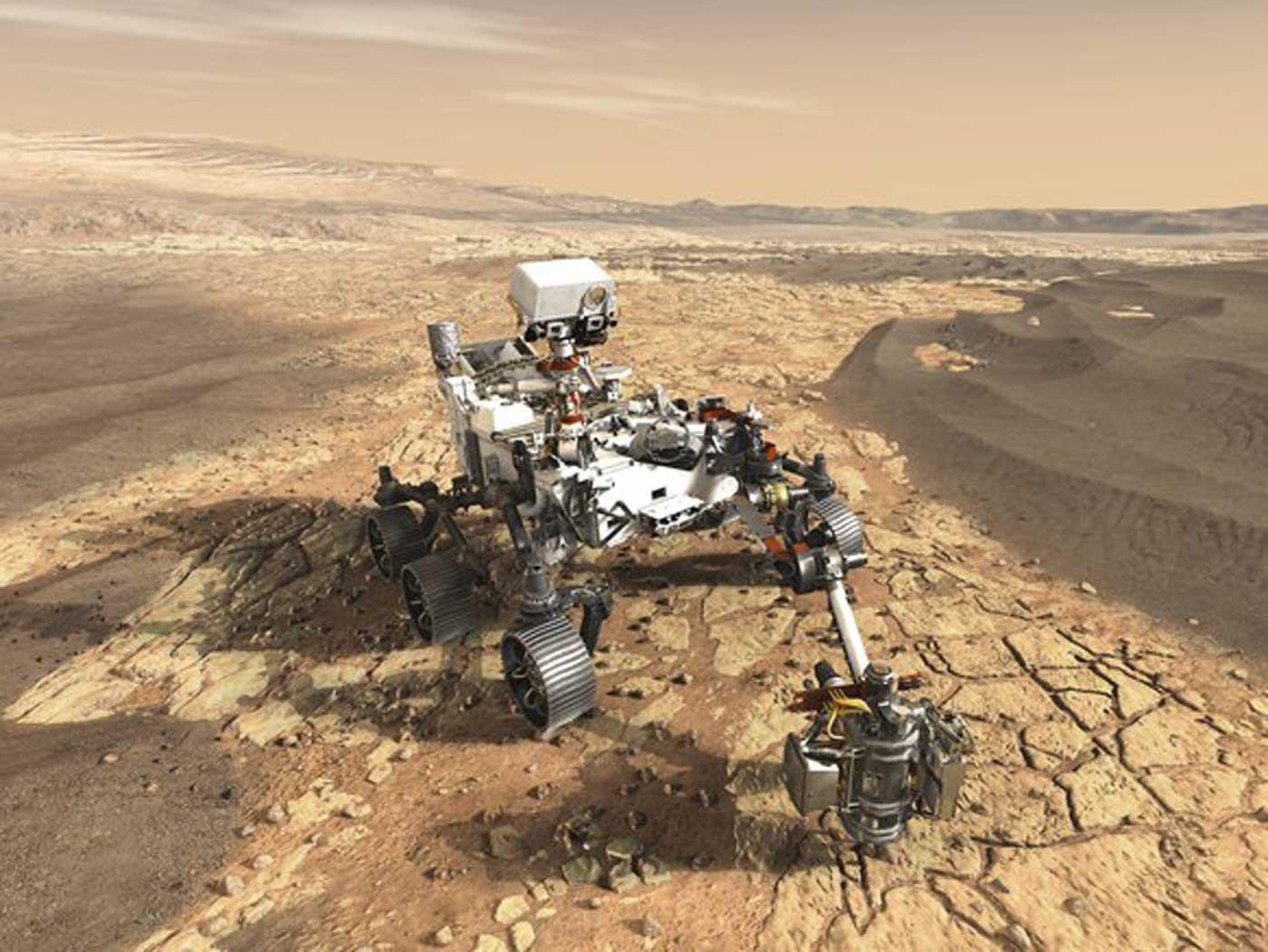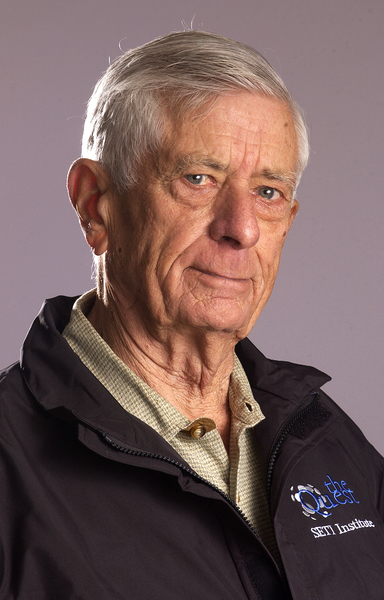
Challenges await the new NASA planetary protection officer, Lisa Pratt, who’s charged with ensuring U.S. missions to space address the threat of biological contamination – both of Earth and by Earth. While an extraterrestrial plague may be the distressing scenario played out in the imaginations of science-fiction writers and scientists alike, the potentially fragile biosphere of an alien world also demands consideration by responsible human explorers. These challenges have at times led to disagreements in mission planning, as SETI Institute Senior Scientist John Rummel, himself a former NASA planetary protection officer, told Wired:
“In the early days, it was very much the scientific community that advocated for forward and backward contamination control, forward to preserve science and backward because it was responsible,” says John Rummel, a biologist and NASA’s planetary protection officer from 1998 to 2006. “But if you get people who are not attuned to flight projects and how they work, you can get wrapped around the axle.”
Pratt has stepped into her role during a time of transition for NASA Office of Planetary Protection, as changes in organization structure had moved it to offices with a technical authority over missions. Rummel joins others who have praised the changes as an important step leading up to plans for public and private missions to Mars, according to Scientific American:
As for NASA’s Planetary Protection Office shifting into the Office of Safety and Mission Assurance, Rummel believes the bureaucratically challenging move “is a good one for planetary protection at this time, given the increased pace of astrobiology-related robotic exploration and NASA’s prospects for human exploration to the moon to prepare for Mars.”
Larger technical and ethical questions remain, as private sector and other nations engage in the current age of space exploration. You can view a lively discussion between Dr. Rummel and Dr. Robert Zubrin, a former astronautics engineer and founder of the Mars society, as they debate the merits of contamination guidelines for Mars exploration in a recent SETI Talk, archived on YouTube.
- Wired: In Search of New Rules to Protect Other Worlds from Earth's Cooties
- Scientific American: As Space Becomes a Busy Place, NASA Bolsters Its Planet-Contamination Police
- SETI Institute: What Are We Protecting Mars From — And Why Do We Bother?
 Farewell to Alan Bagley, Former SETI Institute Trustee
Farewell to Alan Bagley, Former SETI Institute TrusteeIt is with deep sadness we learned of the passing of Al Bagley, who, in addition to being a longtime friend and supporter of the SETI Institute, served on the SETI Institute’s Board of Trustees from 2002 to 2011. He was 93. Our thoughts are with his family as we gratefully remember and say goodbye to our friend and fellow stargazer.
- Mercury News: Alan Bagley, 1924-2018
/cdn.vox-cdn.com/uploads/chorus_image/image/59817861/explained_crop.1527024511.jpg) Jill Tarter and Seth Shostak Discuss Extraterrestrial Life in Netflix Series
Jill Tarter and Seth Shostak Discuss Extraterrestrial Life in Netflix SeriesJill Tarter, Chair Emeritus for SETI Research at the SETI Institute, along with the SETI Institute’s Senior Astronomer, Seth Shostak, were interviewed in the Netflix series Explained. Watch to find out why leading researchers are confident that life exists beyond Earth.
 ET – or AI? First Contact May Be an Encounter with Alien Computers
ET – or AI? First Contact May Be an Encounter with Alien ComputersIf an alien civilization followed a similar trajectory to our own, we might find ourselves making first contact with an artificial intelligence rather than an alien lifeform. As AI rapidly develops on our own world, it’s possible something similar happened on another planet. Seth Shostak, Senior Astronomer at the SETI Institute, spoke to MSN about the likelihood of encountering a post-biological civilization as we explore the cosmos:
..as Shostak points out, planets are volatile, prone to eruptions and earthquakes and the effects of an aging star. “Machines aren’t necessarily going to stay on a planet,” he says. “Planets are dangerous for machines.”
Instead, they’ll likely do what we continually aspire to do, and head for the stars.
If the alien AI’s are out there, are they looking for us too, or might they have reason to avoid us?
When it comes to that idea, Shostak says, “It’s not even dangerous (for the aliens). It’s uninteresting. It’s like me putting a sign up in my yard saying ‘attention all ants.’”
As AI continues to develop, so too does our understanding of the universe. At present Frontier Development Lab (FDL), an applied artificial intelligence research accelerator hosted by the SETI Institute, is using machine learning to tackle scientific challenges and innovate meaningful solutions for space programs. You can read more about FDL on our website, SETI.org.
- MSN: Our first contact with aliens might be with their robots
- SETI.org: NASA FDL Leverages Public/Private Partnership to Push New Boundaries of Space Science with Artificial Intelligence
 Alien Life on Distant Worlds… Or Nearby?
Alien Life on Distant Worlds… Or Nearby?While scientists debate the requirements needed for life to develop, researchers are interested in a number of potentially habitable locations. New evidence suggests that two planets detected by NASA’s Kepler Space Telescope – both Earth-sized and in the habitable zone or range of orbit that allows for the presence of liquid water – have spin-axes that allow for climate stability. This is one of the first studies attempting to determine the climate stability of exoplanets, and as the SETI Institute Senior Astronomer Seth Shostak told Salon, more research is needed:
Seth Shostak, a senior astronomer at the Search for Extraterrestrial Intelligence, said it is an interesting study indeed, but said the real factors that will determine whether or not life is on these planets are biomarkers — specifically, the presence of gases like methane or oxygen.
Closer to home, researchers are eager to explore several locations in our own Solar System for signs of extraterrestrial life. Even distant Pluto surprised observers with hints of liquid water in data gathered by NASA’s New Horizons probe. Yahoo!News asked Seth Shostak if life could be hiding beneath Pluto’s icy exterior:
Seth Shostak of the SETI (Search for Extraterrestrial Intelligence) Project says, ‘Under the surface of Pluto there could be pockets of liquid water. Any place you have liquid water - liquid of any kind -maybe have microbes.’
- Salon: New research suggests two exoplanets might be more like Earth than we realized
- Yahoo News: Five places alien life might be hiding in our own solar system, according to science
- Curiosity.com: For a Planet to Sustain Life, It Needs the Habitable Trinity
 Are We Alone? The Debate Continues
Are We Alone? The Debate ContinuesA study awaiting peer-review suggests that the only intelligent life in the universe may be on Earth. The study proposed a reexamination of the Drake Equation, a probabilistic tool used to discuss the factors needed for intelligent life to arise and produce technology we could detect. The study’s authors propose that the Drake Equation, developed by Dr. Frank Drake, the “father” of modern SETI research and Chair Emeritus of the SETI Institute’s Board of Trustees, relies on parameters that are still largely unknown. Still, Seth Shostak, Senior Astronomer at the SETI Institute, told Mental Floss that it’s premature to rule out the possibility of finding alien technology:
Part of the challenge with mathematical modeling like this, Shostak says, is that the data are limited; scientists just haven’t looked at very many star systems.
“I could walk outside here in Mountain View, California and not see too many hippos strolling the streets,” he tells Mental Floss. “But it would be incorrect for me to say on that rather limited basis that there’s probably no hippos anywhere. It’s a big conclusion to make on the basis of a local observation.”
The study’s authors are attempting to address the Fermi paradox – the seeming contradiction between the probability of extraterrestrial life emerging, and the lack of evidence that aliens exist – but Shostak points out that human explorers have been surprised before:
The Fermi Paradox itself may be naïve in its understanding of the universe, Shostak says. “You could have said the same thing about Antarctica in the 1700s. A lot of people wondered, ‘Is there a continent down there?’ On the one hand, you could argue there was [a continent], and on the other hand, you could say, ‘Look, there’s an awful lot of water in the Pacific and the Atlantic, and there’s no continents there, so why should there be one at the bottom of the ocean?’”
- Mental Floss: New Study Says We Could Be Alone in the Universe
- Vox: Why haven’t we found aliens yet?
- Business Insider: Scientists use this formula, called the Drake equation, to explore the chance we'll make contact with intelligent aliens
Big Picture Science
In last week’s episode, explore some the strange notions and experiments that formed humanities attempts to understand the nature of life, in an encore presentation of Frogs’ Pants. Our previous week’s episode rediscovered the creatures that ruled the Earth for nearly 165 million years (and the screen in the blockbuster Jurassic Park series) in Free Range Dinosaurs.
Last week on Facebook Live, SETI Institute Trustee Jonathan Knowles was joined by scientists Jon Jenkins and Doug Caldwell to talk about NASA's TESS mission and exoplanet detection. On our previous episode of Facebook Live, SETI Institute scientist Michael Busch discussed the Hayabusa 2 mission, a Japan Aerospace Exploration Agency mission to rendezvous with an asteroid and return with samples, with SETI Institute CEO Bill Diamond.
Videos of all past Facebook Live events can be found on our Facebook page: https://www.facebook.com/SETIInstitute/
- International Conference on Environmental Systems (ICES): July 8-12, Albuquerque, NM SETI Institute Senior Scientist John Rummel will participate in a panel discussion on July 10
- A Cosmic Perspective: Searching for Aliens, Finding Ourselves: July 12, University of Austin, TX Jill Tarter, Chair Emeritus for SETI at the SETI Institute will present
- 14th Quadrennial Solar-Terrestrial Physics Symposium: July 9-13, Toronto, Canada Meng Jin, SETI Institute Research Scientist is one of the invited speakers
- COSPAR 2018: July 14-22, Pasadena, CA Numerous SETI Institute researchers will be offering talks including Rosalba Bonaccorsi, Michael Busch, Seth Shostak, David Summers, Jeonghee Rho and John Rummel
- SETI Talks: July 19, Menlo Park, CA VR/AR in Space: The Next Revolution? Timoni West of Unity Labs, Amaresh Kollipara who serves on the SETI Institute Board of Trustees, and SETI Institute scientists Franck Marchis and J.R. Skok will present
- In Saturn’s Rings: August 5, Seattle, WA A new film exploring Saturn’s rings is being shown at the Museum of Flight. Nathalie Cabrol, Senior Research Scientist and Director of the Carl Sagan Center is an executive producer of the film.
- WorldCon 76: August 16-20, San Jose, CA Franck Marchis to participate in a panel discussion.
- International Astronomical Union: August 20-31, Vienna, Austria Franck Marchis, SETI Institute Senior Scientist will speak about adaptive optics and the Unistellar eVscope





